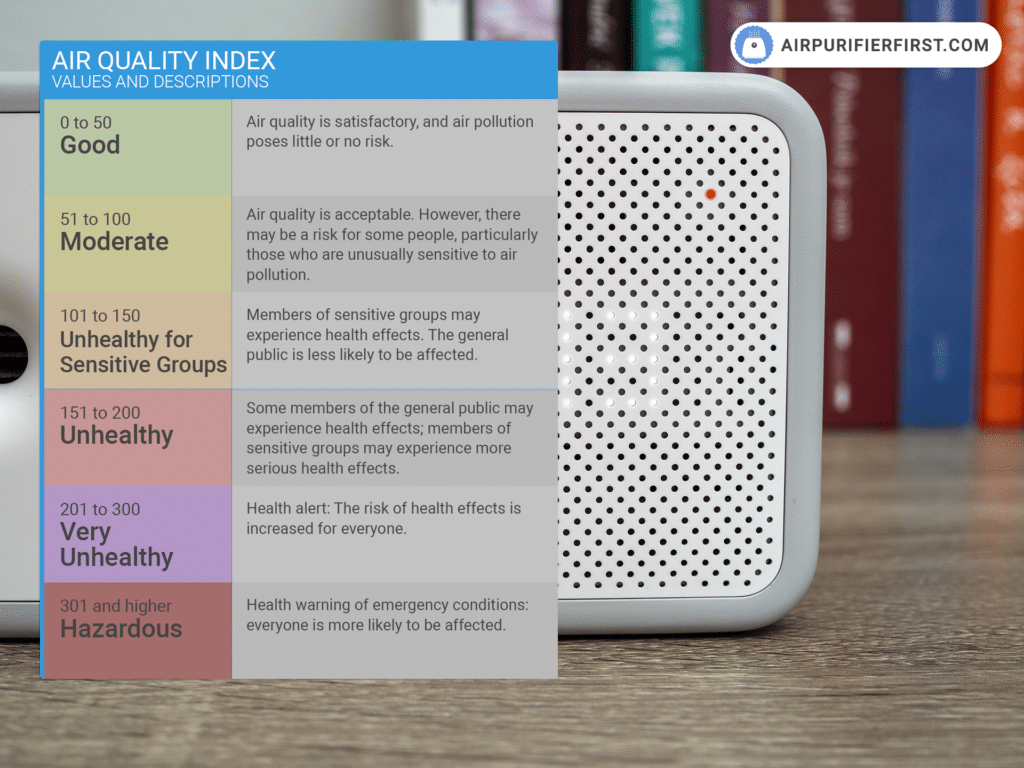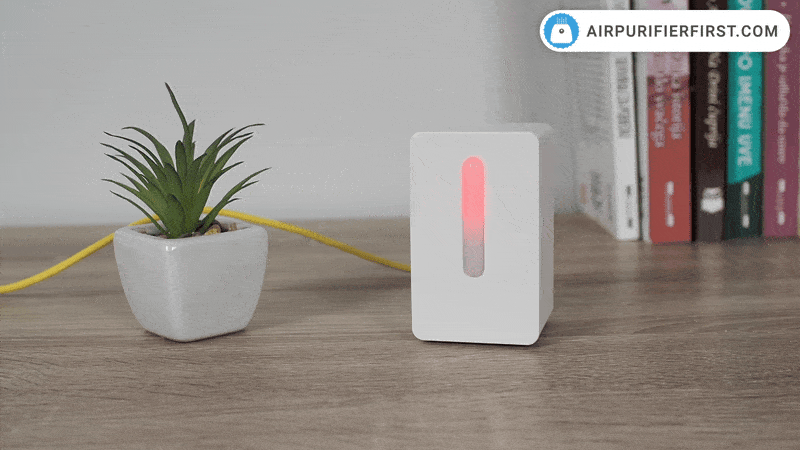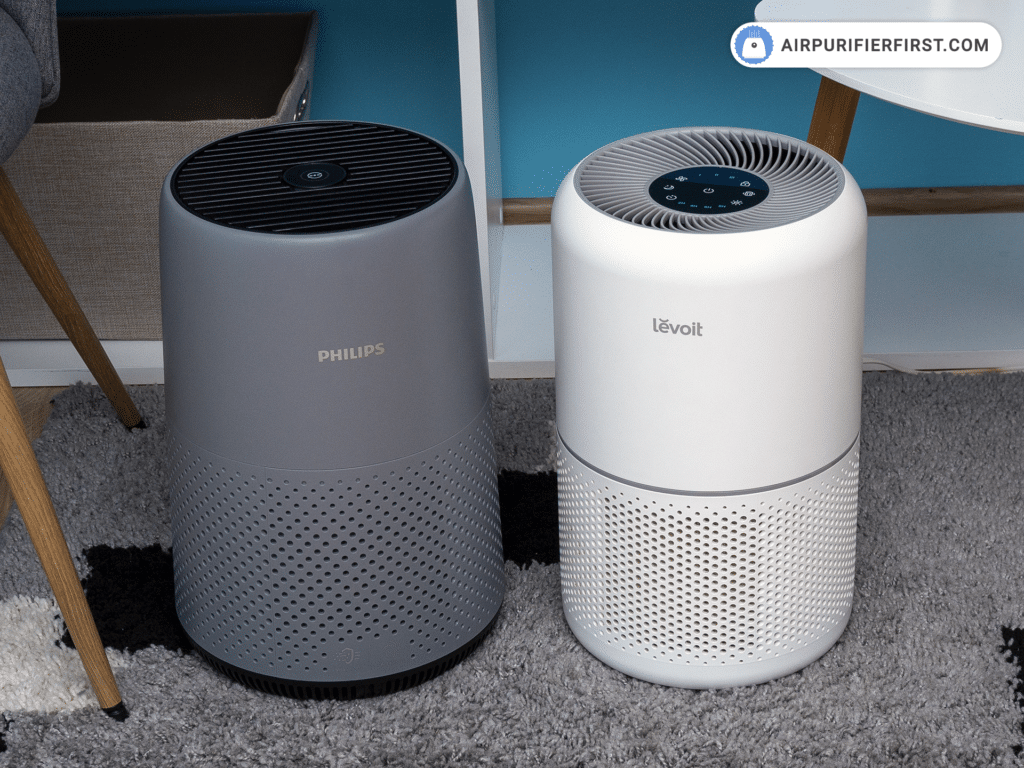Picture this: you wake up to a hazy morning, and the air feels unusually heavy. You wonder if it’s just another day or if there’s something more sinister lurking in the atmosphere. That’s where air quality alerts come into play. An air quality alert is a warning issued for a specific area or country when the air quality reaches levels that could harm people’s health. These alerts often arise during fire seasons but can also be triggered by other factors like vehicle emissions, industrial activities, etc.

Table of Contents
But how can you stay informed about the air quality in your area and whether there’s an alert in effect? It’s easier than you might think. You can get real-time updates on air quality alerts through various channels – your local news, weather reports, the weather app on your smartphone, or even online through websites like AirNow, which the U.S. Environmental Protection Agency supports.
When outdoor air quality worsens, exceeding the thresholds set by air quality standards, an air quality alert may be issued. In such cases, it’s crucial to take action. Stay indoors, close your windows, and minimize activities that could contribute to indoor pollution, such as smoking or extensive cooking.
For extra protection, consider investing in an air purifier equipped with a high-quality True HEPA and activated carbon filter. It’s a simple way to maintain and even improve the air quality in your indoor space.
Key Findings on Air Quality Alerts!
- Air Quality Alerts warn of potentially harmful outdoor air conditions.
- Air Quality can get worse from various sources, including wildfires, vehicle emissions, and industrial activities.
- Real-time air quality information is available through local news, weather reports, smart apps, and websites.
- The Air Quality Index (AQI) is a metric used to determine current air quality.
- Ground-level ozone, particulate matter (PM2.5 and PM10), carbon monoxide, and sulfur dioxide are common pollutants triggering air quality alerts.
- Protective measures during alerts include staying indoors, using high-quality masks, closing doors and windows, turning off air conditioning, and running air purifiers.
- Cross-border pollution, such as wildfires in neighboring regions, can also prompt alerts.
- Indoor air quality monitors can help track and manage air quality indoors.
- Even small air purifiers help remove harmful particles from the air.
Understanding the Air Quality Index (AQI)
The Air Quality Index (AQI) is the Environmental Protection Agency’s (EPA) metric for expressing air quality levels. Simply put, it’s a numerical value ranging from 0 to 500 that indicates the air quality in a specific location, be it a city, town, or area. Monitoring the AQI is conveniently done through the EPA’s interactive map, which displays real-time air quality data from locations equipped with air quality monitors.
However, you can consider installing an indoor air quality monitor for a more personalized approach. These devices, often managed through smartphones, provide an easy and graphically appealing way to track the air quality in your house, room, or office.

According to the EPA, an AQI of 50 or below signifies good air quality, while a reading above 300 indicates hazardous conditions, often triggering air quality alerts. Refer to the table below for a comprehensive guide on what AQI values represent at different air quality levels.
| Values of Index | AQI Color | Description of Air Quality |
|---|---|---|
| 0 to 50 (Good) | Green | Air quality is satisfactory, and air pollution poses little or no risk. |
| 51 to 100 (Moderate) | Yellow | Air quality is acceptable. However, there may be a risk for some people, particularly those who are unusually sensitive to air pollution. |
| 101 to 150 (Unhealthy for Sensitive Groups) | Orange | Members of sensitive groups may experience health effects. The general public is less likely to be affected. |
| 151 to 200 (Unhealthy) | Red | Some members of the general public may experience health effects; members of sensitive groups may experience more serious health effects. |
| 201 to 300 (Very Unhealthy) | Purple | Health alert: The risk of health effects is increased for everyone. |
| 301 and higher (Hazardous) | Maroon | Health warning of emergency conditions: everyone is more likely to be affected. |
If you fall into a sensitive group, an AQI of 100 or higher should raise concern and the necessity for further steps that I will explain in the continuation of the article.
What are the most common pollutants that trigger an air quality alert?
Air quality alerts are warnings that specifically address outdoor air quality. It’s crucial to recognize that even during periods of elevated outdoor pollution, indoor air quality can often be effectively controlled through measures like closing windows and using air purifiers. However, to get a complete understanding of air quality alerts, it’s essential to know which pollutants trigger them and why they pose a threat to public health.
These alerts are typically triggered by deviations from standard values of certain pollutants, including:
Ground-Level Ozone (O3)
Ground-level ozone is a natural gas that can become a serious health concern when concentrated near the Earth’s surface.
While ozone in the stratosphere protects us from harmful UV rays, ground-level ozone can cause respiratory problems and other health issues, particularly in urban areas with high vehicle and industrial activity.
Particulate Matter (PM2.5 and PM10)
Particulate matter comprises tiny particles that can enter our respiratory system and even our bloodstream.
PM10 and PM2.5 refer to particles of different sizes. PM10 can originate from sources like road dust or industrial processes, while PM2.5 is a finer and more dangerous particle primarily linked to industrial activities.
Carbon Monoxide (CO)
Carbon monoxide is a colorless and odorless gas produced by vehicles, fossil fuel combustion, and, in some cases, wildfires.
It has severe health risks, including fatalities, making real-time monitoring essential.
Sulfur Dioxide (SO2)
Sulfur dioxide is released into the atmosphere by industries burning oil or coal, often leading to air pollution concerns. Additionally, it contributes to the formation of dangerous PM2.5 particles.
Canadian Wildfires and US Air Quality Alerts
In recent years, air quality alerts in the United States have been triggered by cross-border pollution from massive wildfires in Canada. One notable incident occurred during a catastrophic wildfire season when smoke pollution from Canadian wildfires spread southward, affecting the air quality in several major U.S. cities. The skies turned a murky brown, and the air became saturated with harmful pollution, triggering air quality alerts for tens of millions of people.

This event is a stark reminder of the interconnectedness of air quality across borders and the need for effective preparedness and response measures. While some regions, like the West Coast, are better prepared to handle air quality alerts due to recurring wildfire seasons, others, like New York City, may face unexpected challenges. Actually, I did research on the most polluted cities in the US in the past year, and New York is not even in the top 10 most polluted places in the US.
It’s important to note that air quality alerts are not limited to North America; many other countries, especially industrial areas and densely populated cities, frequently issue these warnings. Understanding these alerts and their implications is crucial for safeguarding public health and promoting environmental awareness.
Recommendations During an Air Quality Alert
When faced with an active air quality alert in your area, taking immediate steps to protect your health and well-being is crucial. Here are key recommendations to follow:
- Stay Indoors: Avoid outdoor activities as much as possible and seek refuge indoors, where the air quality is typically more controlled and safer.
- Use High-Quality Masks: If you must go outside, wear a high-quality mask, such as an N95 or K95. These masks provide effective filtration against harmful airborne particles.
- Keep Doors and Windows Closed: Maintain a tight seal on your living space by keeping doors and windows closed, especially if there is no urgent need to open them.
- Turn Off Air Conditioning: Stop using air conditioning systems that draw in outdoor air, as they can introduce pollutants and worsen indoor air quality.
- Run an Air Purifier: Use an air purifier to maintain or improve indoor air quality. Air purifiers are equipped with filters designed to capture and remove airborne contaminants.
- Stay Informed: Stay updated on the situation by listening to the radio, watching TV, or following trusted sources that provide information about air quality and any recommendations from government agencies or experts.
It’s crucial to recognize that your health and safety should be the top priority during air quality alerts. Following these recommendations can significantly reduce your exposure to harmful pollutants. Additionally, be watchful about seeking recommendations from reliable sources and adapt your actions accordingly.
FAQ on Air Quality Alert
What is an air quality alert?
An air quality alert is a warning indicating heavily polluted outdoor air that can be potentially harmful, particularly to individuals with respiratory problems or similar health issues.
Can an air purifier help if the air quality is bad?
Yes, absolutely. An air purifier is a device equipped with filtration technology designed to neutralize, kill, or remove pollutants in the air. It can significantly improve overall indoor air quality, even when outdoor air quality is poor.
What should you do when the air quality in your area is poor?
When the air quality in your area is poor, take the following steps: 1. Close your windows to prevent outdoor pollutants from entering your indoor space. 2. Avoid activities that can contribute to indoor pollution, such as smoking or cooking. 3. Minimize outdoor exposure. 4. Consider using an air purifier to enhance indoor air quality. If you don’t have one, it might be a good time to consider getting one.
Is it possible to track air quality in your home?
Yes, definitely. There are plenty of devices available for indoor air quality monitoring. Some highly recommended options include the Awair Element and the Temtop M10i, which have been tested and reviewed here on the Air Purifier First.
Final Thoughts
While it’s true that human activities contribute significantly to high air pollution levels and poor air quality worldwide, it’s not always possible to predict when air quality will be good or bad. This uncertainty underscores the importance of daily air quality monitoring in the same way we track the weather. By staying informed about air quality conditions in our area, we can proactively prepare for potential air quality alerts and take steps to protect our health.
These proactive measures may include running air purifiers, keeping windows closed, or implementing other strategies to minimize exposure to harmful pollutants.
If you have any questions about this topic or need further guidance, please feel free to ask in the comment section below. I’m here to provide assistance and support!
Leave a Reply